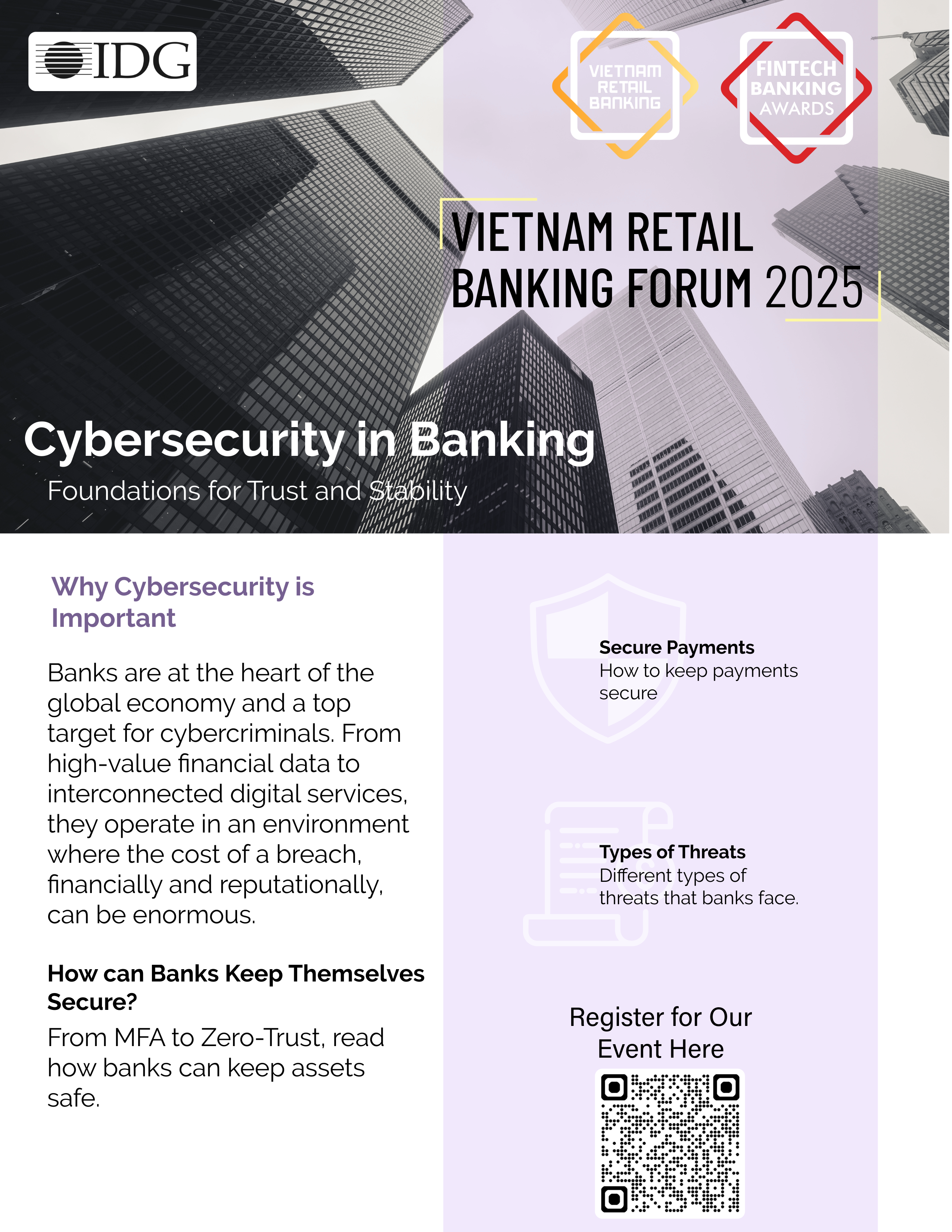
Why Banks Must Prioritize Cybersecurity
Banks are at the heart of the global economy and a top target for cybercriminals. From high-value financial data to interconnected digital services, they operate in an environment where the cost of a breach, financially and reputationally, can be enormous.
Modern banking also includes mobile apps, APIs, cloud services, and real-time processing, which all expand the potential attack surface. At the same time, regulatory bodies are tightening expectations for how banks manage risk and maintain digital resilience. Cybersecurity is no longer just an IT concern; it’s a business imperative.
Key Cyber Threats Facing Banks
- Phishing & Social Engineering: Cybercriminals target both customers and staff through email, SMS, and even deepfake calls to steal login credentials or authorize fraudulent transactions.
- Insider Threats: Employees, contractors, or partners with access to sensitive systems can accidentally or intentionally cause harm. Poor access controls and a lack of oversight amplify this risk.
- Supply Chain Vulnerabilities: Third-party providers and software vendors often connect directly to a bank’s systems. If their security is weak, it becomes a pathway for attackers.
- Malware & Ransomware: Banks face sophisticated malware campaigns designed to steal data, intercept transactions, or lock systems for ransom.
- Cloud & API Security Gaps: As banking infrastructure moves to the cloud, misconfigured environments, exposed APIs, or weak authentication methods can open the door to attacks.
- AI-Driven Threats: Attackers are now using AI to automate and scale phishing attacks, generate realistic spoofing content, and find vulnerabilities faster than ever.
Best Practices for Cybersecurity in Banking
- Multi-Factor Authentication & Role-Based Access Control: Strengthen access management across internal systems and customer-facing platforms. Use biometrics, tokens, and time-based access restrictions to minimize unauthorized use.
- Encrypt All Sensitive Data: Data should be encrypted at rest and in transit using strong algorithms. Protect encryption keys with strict management policies and limit who can access them.
- Real-Time Monitoring & Threat Detection: Implement systems that detect unusual activity across networks, user accounts, and applications. Use behavioral analytics to flag anomalies before they become breaches.
- Routine Testing & Patch Management: Conduct regular vulnerability scans, penetration tests, and red team exercises. Apply critical patches promptly and monitor for configuration drift in cloud environments.
- Zero Trust Architecture: Assume no user, device, or service is trustworthy by default, even inside the network. Require verification at every point of interaction.
- Incident Response Planning & Simulation: Prepare for inevitable incidents by developing a detailed response plan. Simulate breach scenarios to train teams, refine communication, and minimize downtime.
- Security Awareness Training: People are the first line of defense. Train employees to recognize threats like phishing, social engineering, and fraud. Repeat training regularly and measure its effectiveness.
- Third-Party Risk Management: Audit vendors, review their security posture, and ensure contracts include cybersecurity obligations. Continuously monitor their access and activity.
Why It Matters
- Operational Continuity: Attacks can cripple core systems and halt service delivery. Preparedness ensures banks can recover quickly and maintain customer access.
- Reputation & Trust: A public breach can damage a bank’s reputation far more than the financial losses. Customers expect transparency and protection.
- Regulatory Compliance: Banks must meet stringent global standards for data protection, breach notification, and risk governance. Falling short invites penalties and restrictions.
- Digital Transformation: As banks innovate with open banking, embedded finance, and real-time payments, cybersecurity must evolve in parallel.
Banking cybersecurity is about far more than firewalls and antivirus software. It’s about protecting the trust at the core of the financial system. That requires a layered, proactive approach, one that spans technology, people, and policy.
For today’s financial institutions, the message is clear: cybersecurity must be embedded in every decision, every process, and every product. Because in banking, trust isn’t given, it’s earned and protected.

